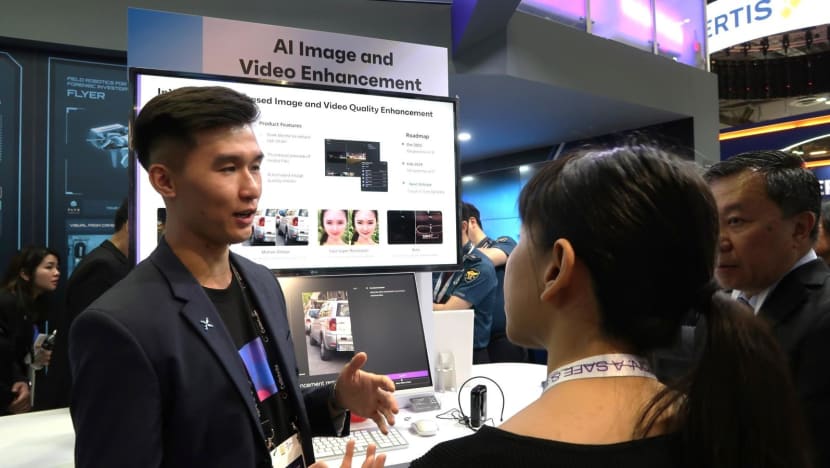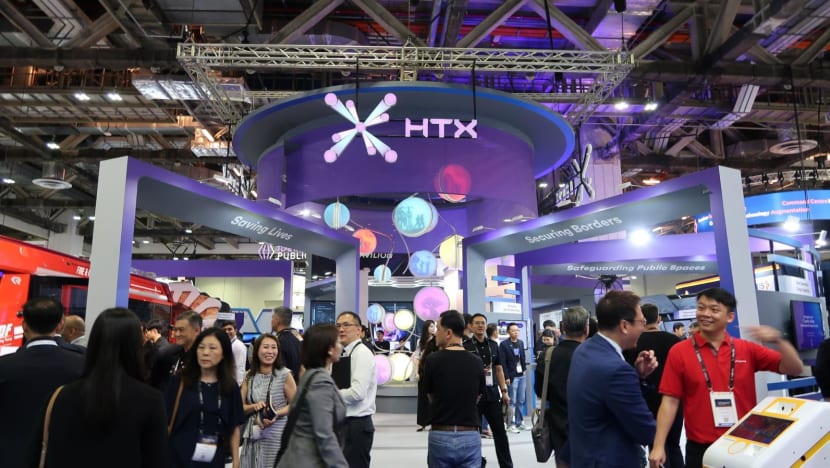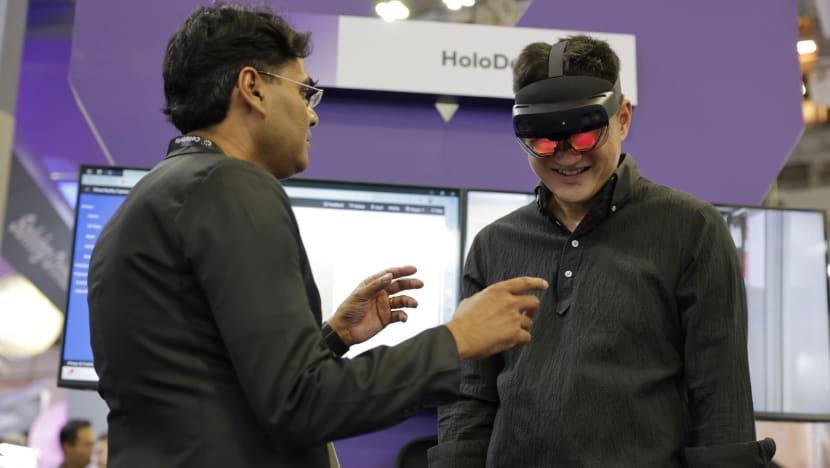Advancing homeland security: Technology takes the lead amid shifting tides
The inaugural Milipol Asia Pacific-TechX Summit 2024 discusses AI’s impact on homeland security and spotlights groundbreaking innovations for public safety.

InXeption, an AI-powered program, is designed to address image quality issues encountered during the investigation process. Photos: HTX
Consider a scenario where criminals are captured on surveillance footage too pixelated for effective investigation. This was a significant challenge for Home Team officers until the introduction of InXeption, a program powered by artificial intelligence (AI) that transforms low-quality images into usable insights.
InXeption’s standout feature, auto-enhancement, uses deep-learning algorithms to automatically detect and correct issues such as poor lighting, blurriness and low resolution. This streamlines the image enhancement process and revolutionises how Home Team officers utilise surveillance technology to enhance public safety.
InXeption and other AI-driven innovations were showcased at the inaugural Milipol Asia Pacific-TechX Summit (MAP-TXS), held from Apr 3 to Apr 5. Themed Powering Innovation: A Safe and Secure Future, the event was jointly organised by HTX, Singapore’s Home Team Science and Technology Agency, and Civipol, the technical cooperation partner of the French Ministry of the Interior. Over 11,000 international visitors from 75 countries, including partners from academia, government and industry, convened at Marina Bay Sands to explore the role of science and technology in bolstering public safety and national security in the Asia-Pacific region.
“AI is changing the way we work, play and even fight crimes,” remarked the guest of honour, Home Affairs and Law Minister K Shanmugam, at the opening ceremony.
EXPANDING THE HORIZONS OF HOMELAND SECURITY WITH AI

At the opening panel, government officials engaged in a robust discourse on the transformative role of AI in homeland security.
Dr Dimitri Kusnezov, undersecretary for science and technology at the US Department of Homeland Security, shared about how AI has advanced criminal investigations, particularly when combating money laundering and child sexual abuse. “AI enables authorities in the United States to establish networks and generate leads 50 times faster than previously possible,” he shared.
Adding to this perspective, Professor Jennifer Rubin, chief scientific adviser at the UK Home Office, noted that AI has boosted productivity by 80 per cent and alleviated the psychological burden on investigating officers, who would otherwise face prolonged exposure to distressing images.

In discussing the need to establish confidence in AI, Mr Ng Yeow Boon, deputy chief executive of HTX, pointed out that speedy AI implementation must be tempered with the gradual building of public trust, as many people still hold reservations about its use.
These concerns are well justified. Dr Kusnezov elaborated: “There’s no foundational science behind AI and no known boundaries, so everything is a matter of trial and error.”
Reinforcing this sentiment, Mr Sim Feng-Ji, deputy secretary of Smart Nation and Digital Government Office, stressed that AI has not been thoroughly tested, resulting in uncertainties regarding its robustness and tolerance.
Despite navigating unchartered territory, the panellists unanimously agreed that the greatest risk lies in not using AI at all. “Choosing not to harness AI despite being aware of it could put you in a far worse position,” said Mr Sim.
ADVANCES IN PUBLIC SAFETY INNOVATION

The AI theme continued to feature prominently at the exhibition hall, where the HTX Pavilion took centre stage.
HTX was established in 2019 with the goal of advancing homeland security through research and development in areas such as biometrics, robotics and AI. Visitors had the opportunity to interact with HTX’s transformative public safety solutions at the pavilion, gaining firsthand insight into the future of security technologies.
Alongside the surveillance-focused InXeption, AlchemiX emerged as a cutting-edge tool designed to tackle the rising threat of deepfakes in audio and video recordings. As generative AI evolves to produce more realistic deepfakes, the race between deepfake detectors and creators has intensified, underscoring the urgency for robust authentication methods. By leveraging state-of-the-art AI models, AlchemiX can identify subtle tell-tale signs in deepfake videos and audios that are difficult to detect with the human eye or ear.

Also on display was the HoloDeX system, a collaborative effort between HTX and ST Engineering. HoloDeX combines spatial computing and AI to reconstruct and preserve crime scenes, mitigating contamination risks by allowing investigation officers to examine crime scenes in a virtual environment. Additionally, it has the capability to integrate incomplete holograms, analyse crime scene data and predict the sequence of events. Beyond crime scene reconstruction, this proof-of-concept has the potential to be extended to other Home Team-related applications, such as training for emergency responders.
As the populace endeavours to harness the game-changing power of AI, Mr Ng advises an organised approach to adoption, reminding stakeholders to take time to build the right infrastructure, cultivate the right mindset and acquire the right talent. “We need to ensure that in our efforts to implement AI, we don’t cut corners and instead prioritise long-term gains.”
Find out more about HTX's homeland security innovations.















